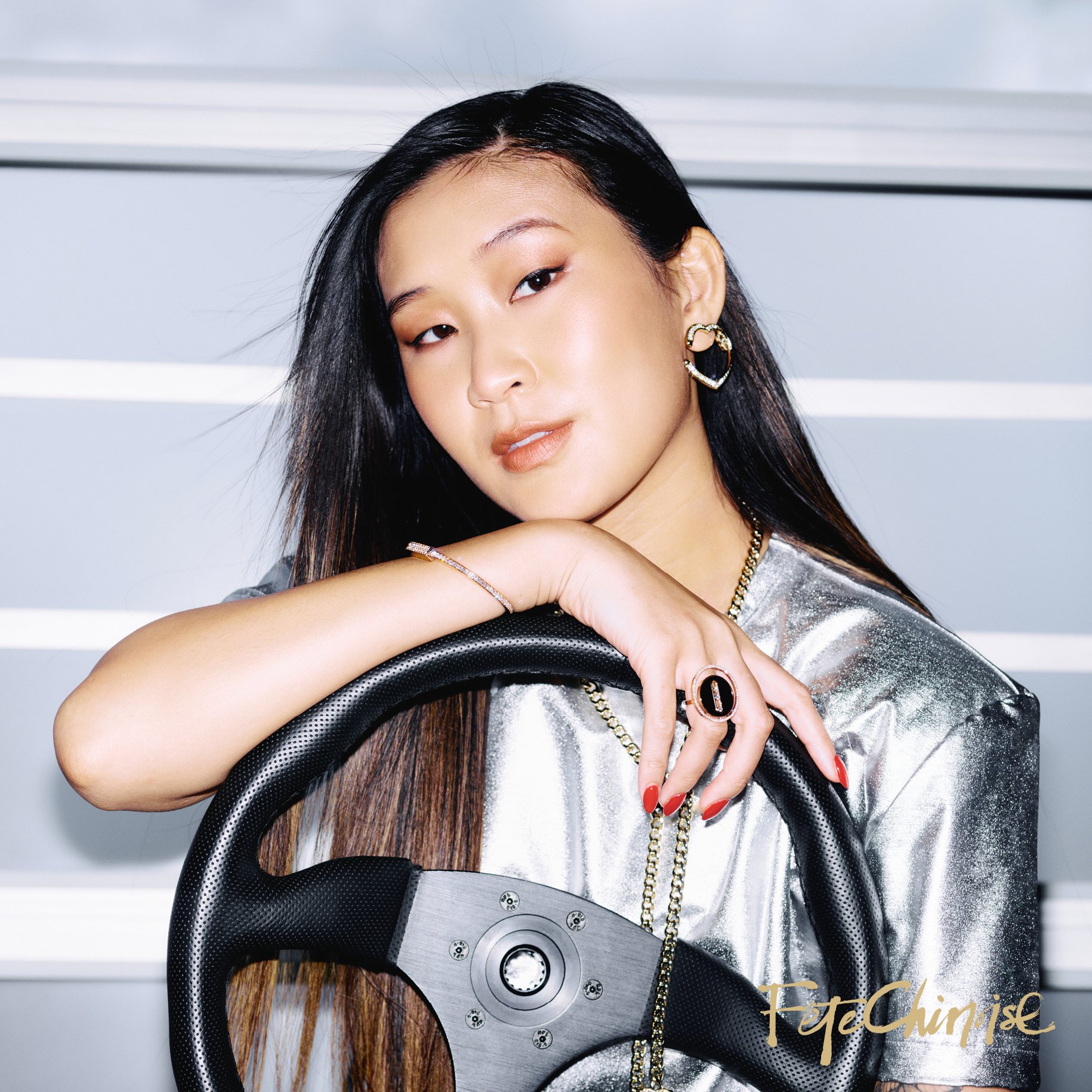Manfred Yuen: Daring to Be Different 阮文韜: 敢為人先的建築「覺‧渡」
chinese: Keira O English: Samuel Mok
AS FEATURED IN EDITION NO. 7 OF FêTE CHINOISE MAGAZINE: PERSPECTIVE 覺•渡
photographer: vincent ma @elle men hong kong
Perspectives of an Extraordinary Architect
阮文韜(Manfred Yuen),一個亞洲建築界不會陌生的名字,被譽為「新一代世界建築大師」,曾獲選45位40歲以下特色世界建築師之一。他,擁有着一個令人羨慕的背景,一份很有說服力的履歷,但心中卻充滿疑問。誰會想到,現今社會充斥着偏倚的審美觀及令人不安的種族歧視?這個別人眼中的高尚行業,真的如此倒退嗎?由他說出來,最適合不過。加拿大籍,香港出生,英國劍橋畢業,曾於奥地利及英國建築界龍頭企業工作,在英國及香港的大學授課。2011年於香港創辦Groundwork元新建城,並在2019年在深圳設置分公司。工作上,他不乏知名的合作夥伴。業界內,他獲得的獎項及提名,多不勝數。這位天之驕子,於近乎完美無瑕的人生旅程上,也曾經歷高低、冷暖、排斥。這一切令他沒有被蒙蔽雙眼,反而更清醒地找出那些歧視的源頭。可幸的是,樂觀的他積極分析面前的挑戰及作出深入反省。希望同路人也能從箇中得到體會。
Kofa Kindergarten 科發幼兒園, photo by Arch-Exist
An Architectural Lens
The theme of this edition of Fête Chinoise resonates strongly with Manfred. He believes that proper perspective is the key to doing things the way they are meant to be. “Because most of us are now accustomed to seeing and feeling designs the wrong way. When judging something, it is common to add external factors into the equation — be it finances, politics or ethnic background for example. If we only relied on our five senses instead, I think we would find everything more enjoyable.”
Kofa Kindergarten 科發幼兒園, photo by Arch-Exist
Manfred observes that in this era of information overload, the prevailing way of evaluating art and design has shifted. “We’re receiving more information, more broadly and faster than ever. The widespread adoption of social media has also changed the narrative of how things are. The pandemic has reminded us that change is constant. To me, change can be good or bad. There is no absolute. But in my mind, there is only one principle for good design — daring to be first. Apart from form, material, and scale, great architectural design can also radiate energy and evoke feelings of happiness. Unfortunately in recent years, mainstream designs have often prioritized political or commercial considerations, so I feel contemporary architecture has suffered a bit from the lack of latitude and vision.”
建築覺‧渡
Manfred得悉今次雜誌的主題 ——「覺‧渡」後,有很大感觸。他認為「覺‧渡」是正確地運用觀感,以擺脫文明以外的死角。他解釋:「因為我們大多數人,都用了錯誤的方法去『看』,和『感受』設計。這歸咎於我們去『看』事物時,錯誤地注入了更多『覺‧渡』以外的元素,例如金錢、政治、種族背景等等。假如,我們在欣賞創作時,能放低其他考量,只單純地運用五官,或許會更能感受、更賞心悅目。」
這兩年在新冠肺炎疫情下,大部份人都被迫躲在家中依賴媒體傳遞外界資訊。Manfred亦察覺到,在這資訊爆炸的年代,人們的審美眼光跟從前已不一樣。他補充:「因為能夠接收的資訊更多、更快、更廣,社交媒體的普及也帶來新的衝擊。疫情提醒了我們『知否世事常變,變幻原是永恆』。這些改變是好是壞,難以定奪。在我心目中,好的設計卻只有一個原則 --- 敢為人先。 一個好的建築設計,在關注建築形式、材料和規模外,是可以注入良好的養分,例如快樂、精神、和訊息這些元素,並關注建築可以提供用者的幸福感。可惜,在這些年,主流的設計都傾向討好別人、或賺取金錢為原則;促使當代的設計欠缺緯度和養分,實質難以進步。」
Kofa Kindergarten 科發幼兒園, photo by Arch-Exist
Trouble and Hardship
King's Kindergarten 金生幼兒園, Photo: Fiona Bao
“In a way it is also understandable though. People must have their basic needs met before seeking to attend to needs that are higher up on the pyramid. Things such as art, science, philosophy, literature and music are connected to the highest level, under self-actualization. But until we satisfy our more fundamental requirements, such as physiological and safety needs, how can we pursue our greater desires? One practical experience that many of us can probably relate to: Asian parents typically worry about their children’s future, placing particular emphasis on whether their education and career path will be sufficient for them to achieve financial security. But how often do you hear about them being concerned with whether their children are fulfilling their dreams?”
sponsored by Hong Kong Economic and Trade Office (Toronto).
There is also another point to pay attention to. For a long time, the common belief is that globalization has become the norm, but recent events have revealed this to be an illusion, or at best an incomplete transformation. “Nowadays, as with other business decisions, artistic design has also more or less hinged on factors related to personal or political gain.
A great, creative piece may be dismissed simply because of the ethnicity or skin colour of the design team. In the long run, these supplemental pressures will hold the industry back from reaching new heights.”
It can also be particularly challenging to be a Chinese architect in the current climate. “I have to say that the general public tends to regard Chinese designs as more commercialized; maybe even plagiarized. And even within China, it is disheartening to see Chinese decision makers prejudiced against Chinese designs. With major projects, political and diplomatic considerations are often at play, so it becomes virtually impossible to solely discuss the work itself.”
Fish Cat Fairyland 魚貓仙山, Photo: Fiona Bao
辛酸內幕
Work in process. King's Kindergarten 金生幼兒園
「這也是無可厚非!馬斯洛的『需求層次理論』便可以簡單解釋這現象。人們要先得到溫飽,才可以提升精神層次。藝術、科學、哲學、文學、音樂等等,都在馬斯洛金字塔的頂層,是『自我實現的需要』,被視為人類最高層次的需求。 其實,未有滿足『基本的需求』,包括衣、食、住、行的話,又怎能走向更高層次?最實際的舉例是,華人父母都擔心子女前途,而絕大部分父母認為,前途是衡量於子女的收入是否足以提供溫飽,而非關心子女的工作能否實現夢想、又或滿足自我實現需要,對吧?」
King's Kindergarten 金生幼兒園
此外,還有一點值得關注。一直以來,大家的想法是各種事物逐漸趨向全球化及多元文化,例如企業國際化、留學普及化丶提倡國際共融等等。但近年出現的國際大事,到底證明了這些所謂的「新」想法是事實,還是假象?「今時今日,欣賞和選擇設計,與其他大型商業決定一樣,或多或少取決於政治、利益層面,亦受到設計團隊的種族和膚色的影響。這些似新仍舊的因素,添加了無比的壓力,或許會影響創作,絕對不容忽視。」他把華人建築師鮮為人知的辛酸內幕娓娓道來。
「不得不承認大眾普遍認為華人的設計較為商業化,偶爾亦有模仿抄襲。在中國内地發展,亦有發現中國人也在歧視中國人的設計, 十分可悲。另外,在某些大型投標項目中,政治和外交元素亦是考慮因數之一。所以單純地論設計,幾乎完全不可能。」
Finding Success in Difficulty
Manfred lists market competition, resource scarcity, and stereotyping as his main challenges. “Take China for example, the market is huge but the competition is fierce. A Request For Proposal would attract dozens of bidding companies, but there can only be one winner. During the selection process, one of the aspects that is reviewed is the background of the firms, and Chinese companies and designers are not nearly as in-demand. On the flip side, foreign designers and companies with overseas backgrounds are more popular with Mainland customers, especially those from Japan or Europe. China has a large population and there are many excellent local designers, but regrettably this skewed thinking and discrimination has taken away most opportunities for this talented group in their own country.”
If any of this sounds familiar or relatable to you, Manfred offers up a few suggestions that may be able to help:
Firstly: Integrated Resource Management. As the market evolves, it is imperative to continuously optimize all available capabilities. To have the greatest impact, this integration should not only be within the business, it should also be aligned with social and international developments.
Next up: Effective Sales Strategies. Humility is seen as a virtue in Chinese culture, but when it comes to marketing, it may be a point of weakness. In the Western world, effective communication and a proactive attitude often leads to greater success. Clear messaging is essential.
Lastly: Lifelong Learning. Only by constantly improving are we able to create well. As Manfred puts it, “I would encourage my colleagues to not just stay within the design or architectural bubble. You might think that this circle is very wide, but in essence you are just being trapped
in a larger cage.”
Kofa Kindergarten 科發幼兒園
整合困局
Manfred 列出主要的挑戰來自幾方面,包括市場競爭、資源、及慣性取態。他説:「雖然市場龐大,但競爭仍然非常激烈。以中國為例,市場大有需求,但競爭對手很多。一個招標項目,分分鐘有數十家公司投標,當中牽涉大量建築師及設計師,可惜中標的公司只得一家。遴選過程當中,亦會審視公司背景。這個行業內,中國公司及華裔設計師在中國内地並不會特別吃香。反而外籍設計師或海外背景公司較受客戶歡迎。中國内地用家則傾向偏愛國外設計。日本或歐洲主帥的設計較容易得到認同。中國地廣人多,其實本土有不少出色的設計。可惜,這慣性取態、歧視,抹煞了一群才華橫溢華人設計師的機會。」
以上這些挑戰,多少也有在你身處的行業出現吧?分析了問題的根源後,Manfred亦帶領我們如何走出困局:首先是資源整合。跟隨着市場的變化與發展,不斷將資源重整及優化。這些整合,除了企業本身外,還要配合社會及國際的轉變。
其次是學會推廣。中國人的謙虛是美德。但在商場上,可能成為了弱點。回顧外國人的市場學,他們溝通直接、善於推銷、及態度進取是其成功之道。所以能清楚表達產品或設計的所有優點,再配合新媒體之發展趨勢與影響,才可跟2021後的市場新常態接軌。然後是終身學習。不斷學習才可以創造。Manfred言道:「我會鼓勵同事們不能只停留在設計或建築的圈子內。你可能會認為這圈子很闊。但說穿了,你也只是被困在一個很大的『鳥籠』內。」
sponsored by Hong Kong Economic and Trade Office (Toronto).



















Most people know Margaret Chung as the Toronto-born actress who made her endearing debut in 1997 in the drama series Detective Investigation Files III as character 李思龍. At the time, she was a fresh face who won audiences over whenever she spoke Cantonese with her friendly Chinese-Canadian accent. So how did she then become the face of advocacy for families in Hong Kong with children with special needs?